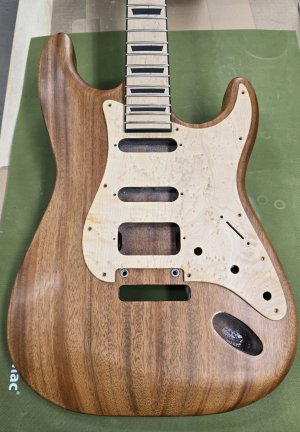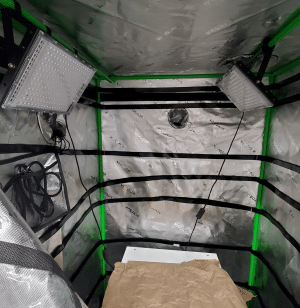
You are using an out of date browser. It may not display this or other websites correctly.
You should upgrade or use an alternative browser.
You should upgrade or use an alternative browser.
Grain filler
- Thread starter UncleRick
- Start date
stratamania
Mythical Status
- Messages
- 12,265
I have no idea where in the world you are but here are a couple of examples of what you can use.
 www.rustins.ltd
www.rustins.ltd
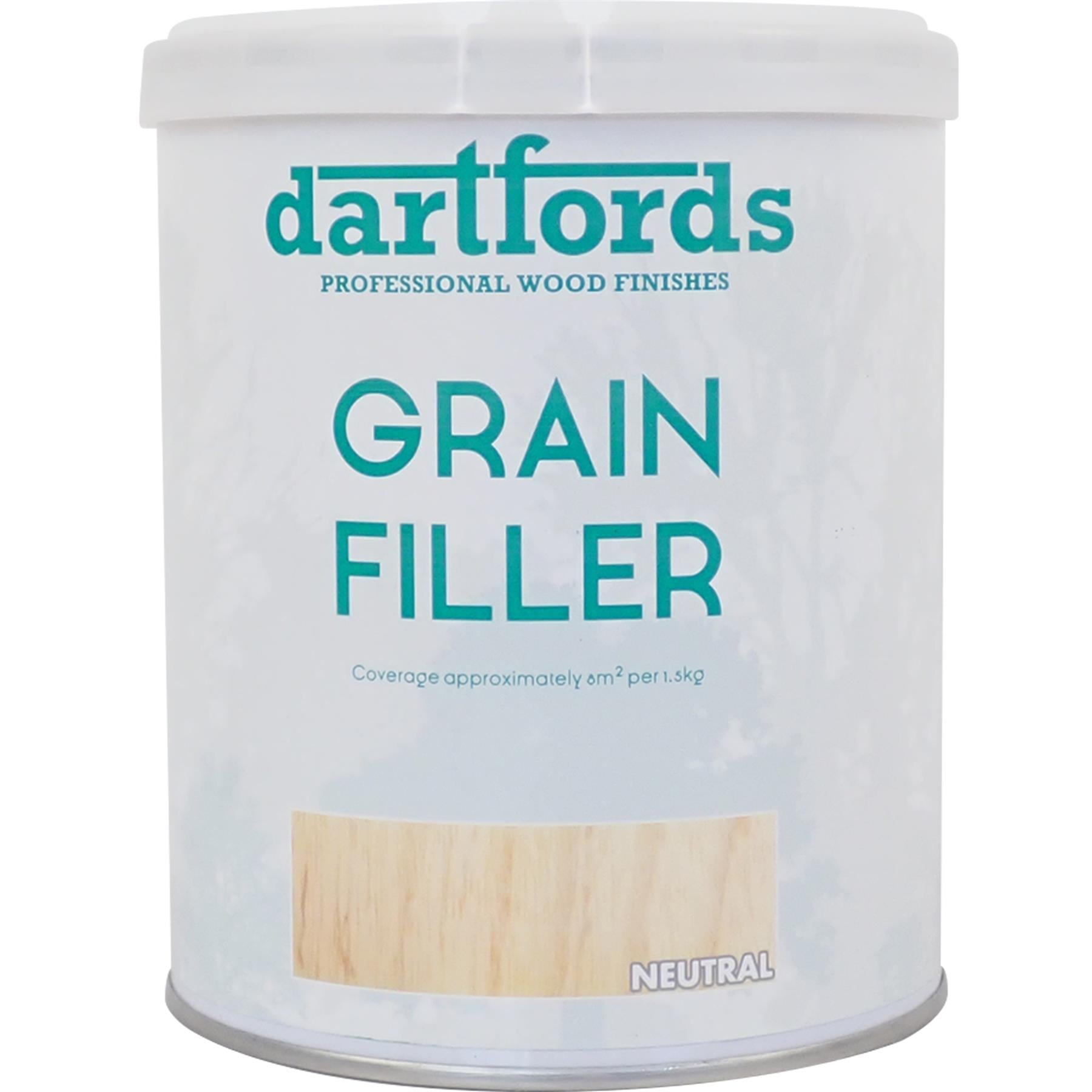
Grain Filler | Rustins
Is supplied as a paste, which is thinned with white spirit for use. It is applied to wood before finishing to fill the pores, preventing sinking of...

DuckBaloo
Senior Member
- Messages
- 378
I use the water-based grain filler these days (been buying Goodfilla). Water-based requires more work than the old oil-based stuff because it shrinks back more, but I don't have to worry about dangerous fumes and rags randomly bursting into flames.
Many people praise Z-pooxy, I plan to give it a try next time.
Many people praise Z-pooxy, I plan to give it a try next time.
NedRyerson
Senior Member
- Messages
- 857
How do you get the stuff like Goodfilla or Timbermate to be actually workable? They've been this dried out (and smelly), hard blocks inside the container. I've read to add water to thin it out, but it's almost impossible to rehydrate and stir. Even if I carve out a small chunk of it and put it in another container, it's still like hard clay that doesn't want to mix very well.I use the water-based grain filler these days (been buying Goodfilla). Water-based requires more work than the old oil-based stuff because it shrinks back more, but I don't have to worry about dangerous fumes and rags randomly bursting into flames.
Many people praise Z-pooxy, I plan to give it a try next time.
Scott
Junior Member
- Messages
- 33
I have a strat warmoth body (ash/maple top) that I didn't grain fill. The grain read-thru had a nice effect. I did a dye job on it with a nitro finish. My inexperienced brain told me the grain filler would effect the dyeing process and i wasn't opposed to seeing grain on the finished product. The top was maple so the sealer filled any of the grain. There may be some downstream finishing pitfalls to skip the grain fill so proceed at your own risk. I did have an issue with the polishing compound getting caught in the end grain on the side of the body. I finished it in 2017 and I think there are still a few specs of compound that I couldn't get out.
Green is alcohol and colortone stain applied to bare wood, then many coats of vinyl sanding sealer. The black is colortone black stain and nitro:
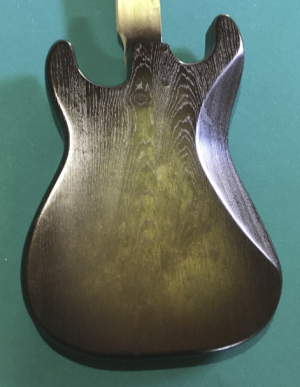
Green is alcohol and colortone stain applied to bare wood, then many coats of vinyl sanding sealer. The black is colortone black stain and nitro:

DuckBaloo
Senior Member
- Messages
- 378
How do you get the stuff like Goodfilla or Timbermate to be actually workable? They've been this dried out (and smelly), hard blocks inside the container. I've read to add water to thin it out, but it's almost impossible to rehydrate and stir. Even if I carve out a small chunk of it and put it in another container, it's still like hard clay that doesn't want to mix very well.
I put some in a mixing cup, add water, and stir, ...and stir, ...and stir. And, yes, very smelly. But, thankfully, not noxious fumes like the classic oil-based fillers.
If it's a an opaque finish, many builders just use thinned drywall compound.
Last edited:
Scott
Junior Member
- Messages
- 33
Lookin great!I just finished a mahogany body using Solarez grain filler and it worked great. Used Solarez I can’t believe it’s not lacquer to do the clear coat. Incredibly happy with the results.
I was not aware of the Solarez U/V cure products. I am always on the lookout for options that are less toxic/less flammable/wont kill me sooner. I will definitely consider them. One of the reasons I love this forum.
Last edited:
TimesNewRoman
Junior Member
- Messages
- 64
I second JPOL's endorsemsnt of solarrez grain filler. I'll never use anything else. First, there is NO SHRINKAGE which undo's the progress and requires multiple applications when anything with a carrier solvent (including water) is used. Two part epoxy shares that advantage but puts you in a race against time as it cures. The solarrez has infinite working time without starting to gel up. I did an application at night and cured in the sun 12 hours later. Take all the time you want to spread it perfect. Then 5 minutes in the sun and its ready to sand. And, it sands so nicely- powders up so quickly and evenly.
This awesome grainfiller is not to be confused with the top coat from the same manufacturer, the horribly named "I can't believe its not lacquer". This I do not recommend. Someone here described in detail an ordeal involving tiny fisheyes and I had the exact same problem.
Here is 2 fills on a koa lam top and 1 fill on a walnut neck. The tiny dots on the body top are artifacts- there are zero open pores and its ready for shellac.
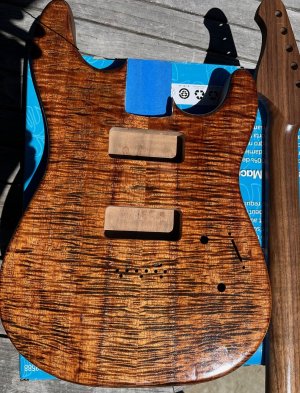
This awesome grainfiller is not to be confused with the top coat from the same manufacturer, the horribly named "I can't believe its not lacquer". This I do not recommend. Someone here described in detail an ordeal involving tiny fisheyes and I had the exact same problem.
Here is 2 fills on a koa lam top and 1 fill on a walnut neck. The tiny dots on the body top are artifacts- there are zero open pores and its ready for shellac.

NedRyerson
Senior Member
- Messages
- 857
First, there is NO SHRINKAGE which [undoes] the progress and requires multiple applications when anything with a carrier solvent (including water) is used.
Ignoring the juvenile, middle-schooler urge to comment inappropriately
JPOL007
Senior Member
- Messages
- 470
Beautiful job! I too had some fisheye issues, contacted Solarez and was told to strain the liquid through a 120-mesh strainer from Harbor Freight. This got rid of tiny, hardened pieces of finish in the container. Their rep said this happens when the container date is near or past best by date. They sent me a new pint of the finish for free. The strained finish went on perfectly and no more fisheye issues. I use a portable grow house with 2 large UV lights for curing. This allows me to cure when the sun is not available. Got it and the lights on Amazon.I second JPOL's endorsemsnt of solarrez grain filler. I'll never use anything else. First, there is NO SHRINKAGE which undo's the progress and requires multiple applications when anything with a carrier solvent (including water) is used. Two part epoxy shares that advantage but puts you in a race against time as it cures. The solarrez has infinite working time without starting to gel up. I did an application at night and cured in the sun 12 hours later. Take all the time you want to spread it perfect. Then 5 minutes in the sun and its ready to sand. And, it sands so nicely- powders up so quickly and evenly.
This awesome grainfiller is not to be confused with the top coat from the same manufacturer, the horribly named "I can't believe its not lacquer". This I do not recommend. Someone here described in detail an ordeal involving tiny fisheyes and I had the exact same problem.
Here is 2 fills on a koa lam top and 1 fill on a walnut neck. The tiny dots on the body top are artifacts- there are zero open pores and its ready for shellac.
View attachment 61887
JPOL007
Senior Member
- Messages
- 470
Here is a photo of my curing setup. The grow house is 3ft. x 3ft. x 6ft. The image was too large the first time.Greenhouse is a good idea IMO
Attachments
Last edited:


